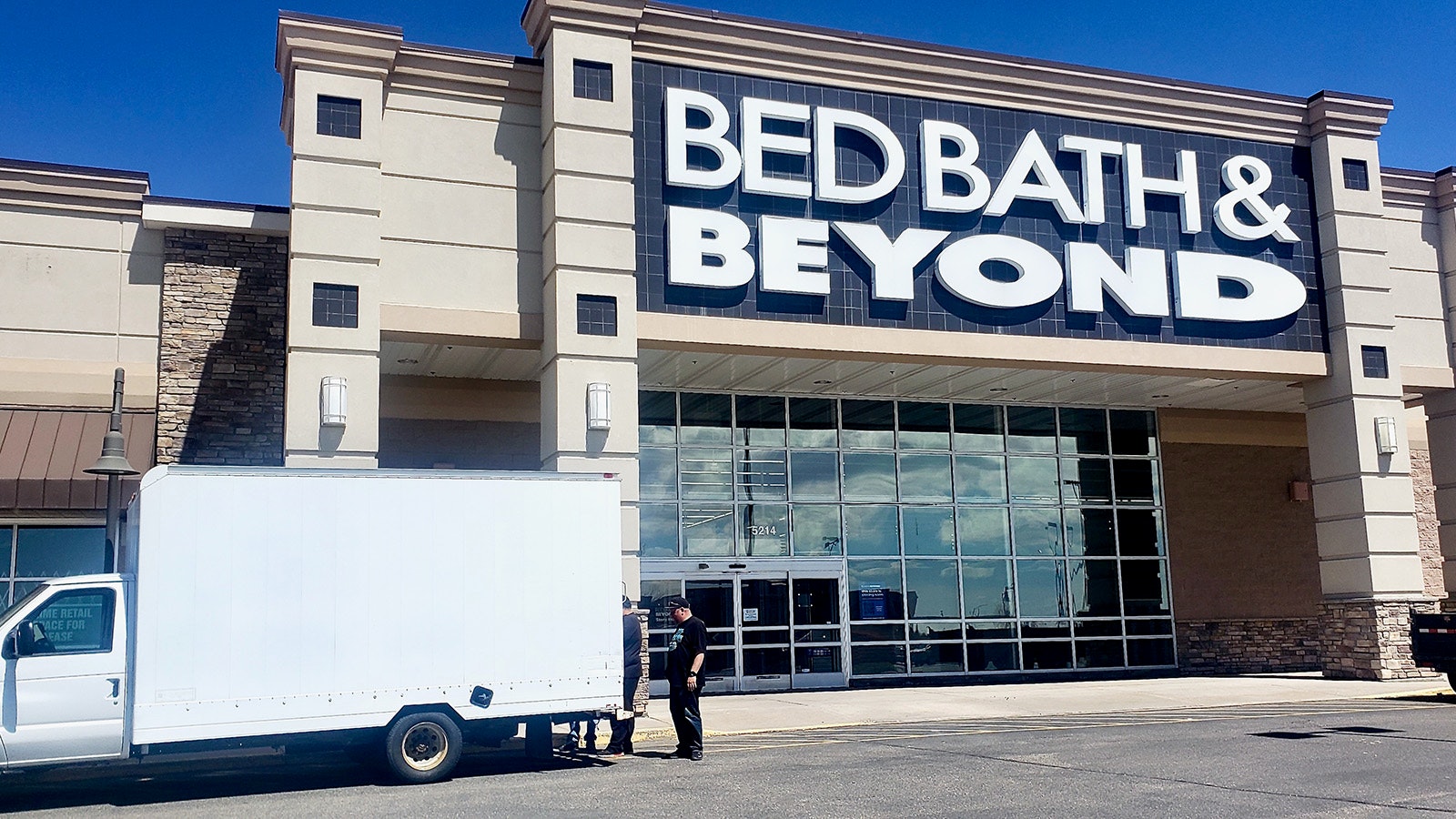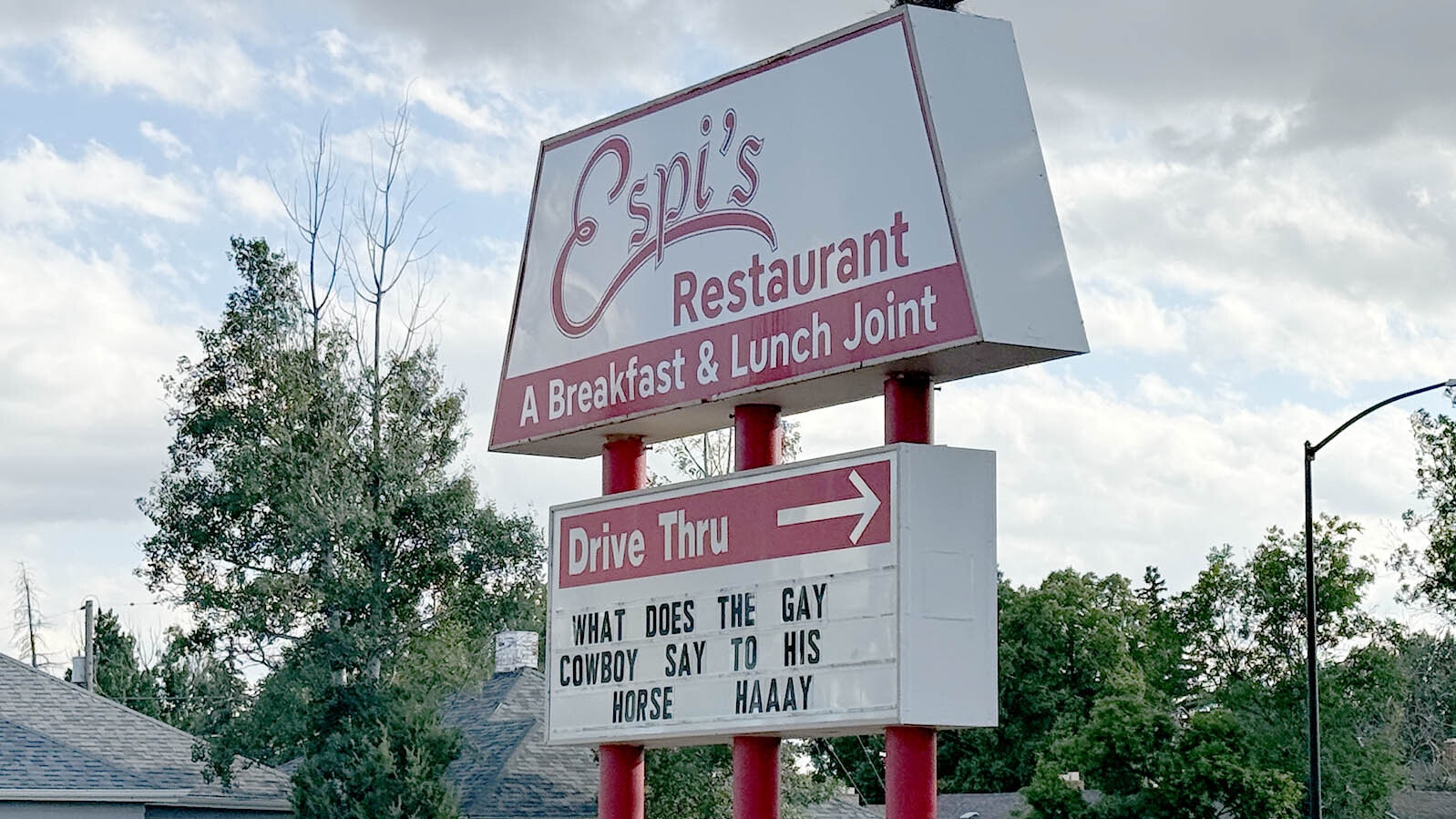Last-minute Bed Bath and Beyond shoppers in Wyoming were disappointed Monday to find the store in Cheyenne has already closed.
Sunday was its last official day, Cowboy State Daily was told at the door, while workers positioned a white truck near the entrance. It also was the last day of business for the chain’s Casper store.
In February, however, store personnel had told Cowboy State Daily the Cheyenne location would likely linger into May, as it would help liquidate goods from various warehouse locations in the region, including one in Loveland, Colorado.
But on Sunday, the retailer announced it’s filing for Chapter 11 bankruptcy protection in the District of New Jersey.
“Thank you to all of our loyal customers,” Bed Bath & Beyond’s Website states. “We have made the difficult decision to begin winding down our operations. Bed Bath & Beyond and buybuy BABY stores remain open to serve you.”
Failed Turnaround
Bed Bath & Beyond’s bankruptcy comes after years of losses. The company had been trying to stave off bankruptcy by closing a number of stores and raising $1 billion dollars with an unusual stock offering backed by investment firm Hudson Bay capital Management, a merger specialist based in Connecticut.
But the hedge fund deal was scrapped after stock prices slumped and the retailer instead tried to raise $300 million from other investors.
The retailer employs 14,000 people nationwide, and said at the time it was trying to save as many of those jobs as it could.
$5.2 Billion Debt
The bankruptcy filing changes the gears on efforts to save the stores. Companies undergoing Chapter 11 often sell assets to satisfy debts. The company listed $4.4 billion in assets in its bankruptcy filing, but owes about $5.2 billion to as many as 50,000 creditors.
Bed Bath & Beyond has received $240 million in debtor-in-possession financing from Sixth Street Specialty Lending so it can continue operating its 360 Bed Bath & Beyond and 120 buybuy BABY stores and websites during liquidation.
In a release, the company said that while it has begun a liquidation sale, it will use the Chapter 11 proceedings to conduct a limited sale and marketing process for its assets. Motions requesting that authority have also been filed with the New Jersey Bankruptcy Court.
“In the event of a successful sale, the Company will pivot away from store closings needed to implement a transaction,” the company states in its media release. “The Company believes this dual-path process will best maximize value.”
Big Box Struggles
Bed Bath & Beyond is just the latest in a long string of big-box stores that have been struggling as the retail landscape continues to be reshaped by online shopping trends.
Storied brands like JC Penney — launched in Kemmerer, Wyoming — Sears, Fashion Bug, Payless and many others have given way in recent years, with the rise of Amazon and other online retailers.
Bed Bath & Beyond at its peak had 949 stores and locations in all 50 states. It was so popular, it was even mentioned in movies like “Click,” an Adam Sandler flick, and “Old School,” which helped put Will Ferrell onto Hollywood’s “A” list.
The iconic store, though, had relatively humble beginnings as the “Bed ’n Bath” store in Springfield, New Jersey, getting its start as a niche store providing linens and bath products. It leveraged the rising tide of 1980s consumerism to quickly scale into a number of other categories.
Rise And Fall Of An Ultimate Category Killer
Category killers are a business model that features large stores with a diverse inventory in a wide range of goods, at prices other stores can’t afford to beat. It works by volume, allowing the retailer to set prices lower than any other store can afford.
The model worked exceptionally well for Bed Bath & Beyond throughout the first decade of the 2000s, but its leadership struggled to adapt to the new shopping landscape ushered in by the Internet and online shopping options such as Amazon and Walmart.
The divide between the business and consumers grew wider under subsequent CEOs, whose efforts to turn the store around completely missed the mark on what consumers really wanted, and what had once made Bed Bath & Beyond so successful — its affordability and unparalleled selection.
The latest effort, which replaced popular and affordable brands that loyalists had loved with an avalanche of high-priced, private-label goods appeared to be doing OK in the beginning days of the COVID-19 pandemic, but quickly sagged. Consumers could find similar products elsewhere for much less, particularly online — something shoppers pointed out to Cowboy State Daily in February when the Cheyenne store’s liquidation began.
In September, when the company announced it would close 150 stores, Wyoming’s Casper and Cheyenne locations initially weren’t on the list, which led many to hope these stores would be spared.
But in February, signs appeared at each store announcing their impending closure and a liquidation sale. They also were soon added to the growing list of stores headed into the big-box great beyond.
Renee Jean can be reached at: Renee@CowboyStateDaily.com





